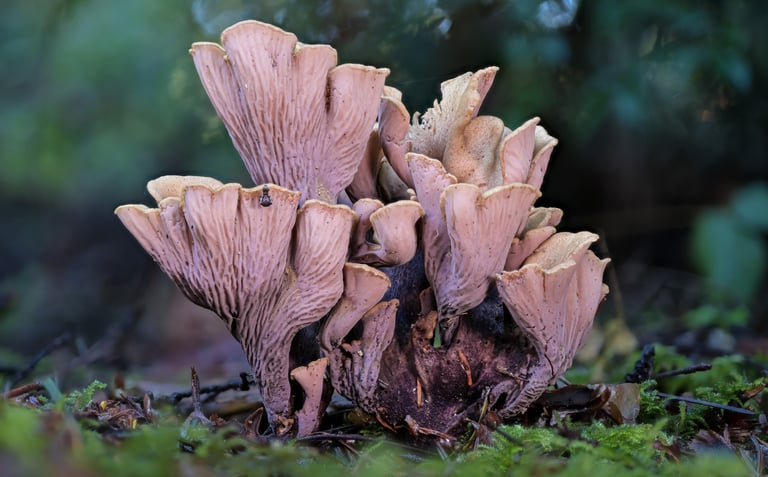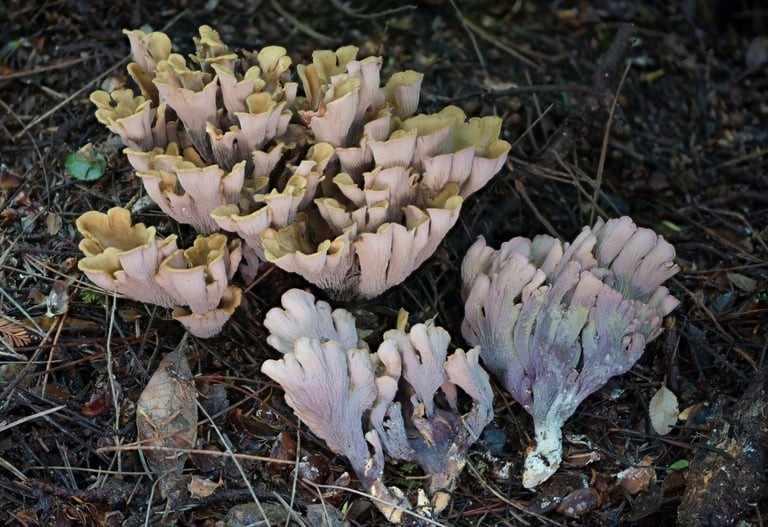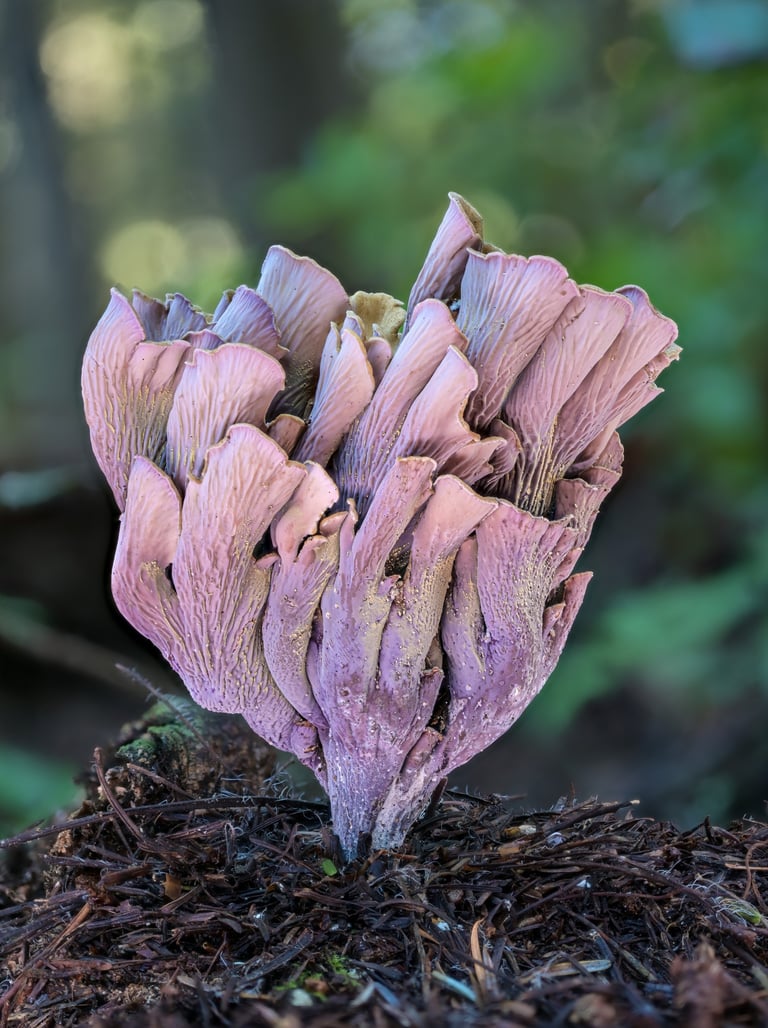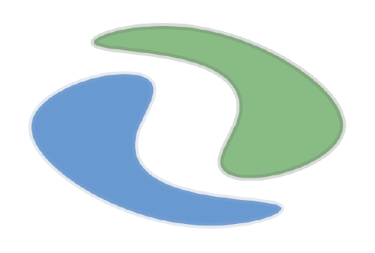Gomphus Clavatus




Images By Alan Rockefeller
Gomphus clavatus is sometimes confused with other mushrooms, such as the Cantharellus cibarius (also known as the chanterelle), which is more funnel-shaped, has a ridged cap, and is usually yellow to orange in color. The Hygrophoropsis aurantiaca (also known as the false chanterelle) has a cap that is notched or forked near the stem like the Gomphus clavatus, but the cap is orange and smooth, and the gills are not decurrent.
Description
1. Cap: The cap of Gomphus clavatus is usually funnel-shaped and has a diameter of 2-8 cm. The cap color varies from light brown to grayish brown to reddish brown, and it has a slightly fuzzy texture.
2. Gills: The gills of Gomphus clavatus are notched or forked near the stem and are usually decurrent (extending down the stem). They can be white, cream-colored, or pale yellow.
3. Stem: The stem of Gomphus clavatus is thick and usually 3-7 cm tall and 1-2 cm wide. It can be pale yellow, white, or a similar color to the cap.
4. Spore print: The spore print of Gomphus clavatus is white.
Image By Alan Rockefeller







